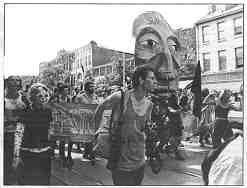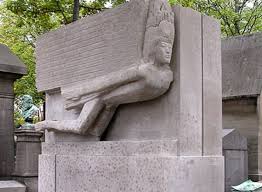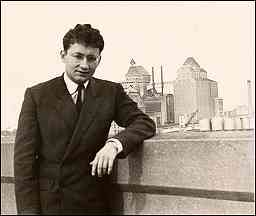Allan Antliff
Allan Antliff
1918: Russian Artists of the Anarchist Revolution
Three artists spent the night in the mansion, since outside the museum a studio was set aside for making art. As the artists told it, that memorial morning We were awakened by shouts of “We’ll shoot! Hands up!” Armed soldiers ordered them to get dressed, took them out to the courtyard and together with anarchists sent them off to the Kremlin.” [1] This is Alexandr Rodchenko’s description of the Cheka’s raid on the anarchist-held Morozov Museum in Moscow in the early morning of April 12, 1918 published in Anarkhiya (Anarchy). The report survives as an undated fragment in the New York Public Library, where North America’s only copy of the short-lived revolutionary newspaper was allowed to disintegrate, neglected and forgotten, until the remains were microfilmed some years ago.
Oct 29, 2021 Read the whole text...
Allan Antliff
Anarchy in Toronto
The anarchist movement reinvents and redefines itself at Toronto’s second Mass gathering in a decade.

TORONTO—Accompanied by much fanfare and a bit of controversy, this Canadian city was the setting August 17–23 for its second international anarchist/antiauthoritarian gathering in a decade. The organizers titled the event, “Active Resistance,” (AR), after the 1996 Chicago anarchist actions of the same name at the Democratic National Convention. (See FE #348, Fall 1996)
Feb 9, 2021 Read the whole text...
Allan Antliff
Anarchy, Neo-Impressionism and Utopia
The wandering of Humanity
“The tramps refused to obey; they abandoned time, possessions, labor, slavery. They walked and slept in counter-rhythm to the world.”
—Anais Nin, The Tramps, 1946
Anais Nin’s encounter-with the homeless wanderers of her day—the tramps of Paris, “in counter-rhythm to the world” reminds me of an enduring duality in anarchism. We stand at one remove from capitalism, attempting in our own way to live in a degraded world in spite of it. In the quest to realize our ideals many of us have joined the ranks of such rebels, who subsist on capital’s margins.
Feb 5, 2016 Read the whole text...
Allan Antliff
Freedom, Individualism, Revolution
Courbet, Zola, Proudhon and Artistic Anarchism
Artistic anarchism has a long and complex history. Certainly one of its most interesting chapters in France is the development of two competing anarchist discourses about art’s libertarian possibilities during the years leading up to the ill-fated Paris Commune of 1871. Then the paintings of the anarchist artist Gustave Courbet served as a foil for a debate in which Pierre-Joseph Proudhon’s praise for Courbet’s “Realist” aesthetic was pitted against the young novelist Emile Zola’s enthusiasm for the stylistic qualities of Courbet’s art. Proudhon encapsulated his views in his last book, Du principe de l’art et de sa destination social (The principle of art and its social goal), published in 1865. [1] Here he situated art production socially so as to affirm the artist’s freedom to transform history. Proudhon argued art was inescapably social, and that the artist was free only to the degree to which he or she sought to transform society. He admired Courbet’s Realism because it pushed history forward through critique, extending the dialectical interplay between anarchist criticism and social transformation into the artistic realm.
Feb 17, 2016 Read the whole text...
Allan Antliff
Herbert Read’s Surrealism
(for Federico Arcos)
In 1937, at the opening of the London exhibition, “Surrealist Objects and Poems,” anarchist art critic Herbert Read delivered a short talk proclaiming the movement’s artists as “angels of anarchy.” The show’s catalogue cover also featured a sculpture by the Argentinean-English surrealist Eileen Agar entitled, “The Angel of Anarchy.” Who was this “Angel?” The mystery was cleared up in the December 1938-January 1939 issue of the English surrealists’ London Bulletin, where a photo of Read, author of Poetry and Anarchism, appeared alongside a reproduction of the work.
Apr 17, 2021 Read the whole text...
Allan Antliff
Money Lures
Richard Mock’s Sculptures Hang in the Halls of Capital’s Temples
I have long admired Brooklyn-based Richard Mock for his outspoken commitment to anarchism and clear-sighted attacks on contemporary injustices.
Consequently, I was delighted to learn he has been exhibiting his most recent sculptures in bank lobbies, no less. But then, Mock has a way of getting what he wants: this show has graced several banks in Canada, the United States and Germany (hesitating bank managers get a free lure, Mock tells me).
Nov 25, 2019 Read the whole text...
Fifth Estate Collective
David Watson
Allan Antliff
News & Reviews
In his foreword to Clifford Harper’s Designs for Anarchist Postage Stamps: Postage Stamps for After the Revolution, Colin Ward reminds us that some public institutions are worth saving. No radical activist could deny the immense importance of sending and receiving mail, and what this international public institution has meant to us.
Feb 13, 2021 Read the whole text...
Allan Antliff
Punching Holes in Russian Capitalism
Seeds of the 1917 Revolution are Sprouting Again
During the 1917 Russian revolution, anarchists urged workers to take control of their lives by turning the capitalists out and seizing control of the means of production, the better to reconstruct society along anarchistic lines.
In some instances, property was communalized and a post-capitalist social order began to emerge. One such experiment was initiated by Boris Yelensky, an anarchist who returned to Russia in February 1917 after a lengthy exile in Chicago: Yelensky made his way to his home town of Novorossiysk in August where he formed an anarchist propaganda group.
Nov 25, 2019 Read the whole text...
Allan Antliff
Mark Antliff
Sexual Anarchy
The Monument to Oscar Wilde
The Pere Lachaise Cemetery in Paris contains many tombs honoring artists and rebels, but the most striking of them all is the monument to the gay English playwright and anarchist Oscar Wilde. [1]

The story of Wilde’s trial for homosexuality and subsequent imprisonment in England is well-known. After his release from jail in 1897, he fled to the continent and settled in Paris. He died there in exile in 1900 and was quietly buried in Pere Lachaise.
Mar 22, 2021 Read the whole text...
Allan Antliff
The Life of Guy Debord: A History
A biography of a founder of the Situationist International whose conviction that critique had a vital function in the making of history came to bear in the streets of Paris in 1968
reviewed in this article
Guy Debord—Revolutionary by Len Bracken, Feral House, Venice, California, 1997, 267 pp.
This book has much to offer. One of its stated purposes is to make the life and writings of Debord accessible and I am happy to report that in this Bracken has succeeded.

Feb 12, 2021 Read the whole text...
Allan Antliff
Toronto’s Anarchist Free School
Theory into Action
During last August’s Active Resistance gathering (see FE #352, Winter 1999) a discussion group on Community Organizing came up with a proposal to found a free school in Toronto.
I and others were approached to participate in the effort, and before long a core group of about eight people was meeting twice a week to hammer out the logistics. From the start we envisaged the school serving as a center for anarchist organizing and activism.
Mar 14, 2021 Read the whole text...
